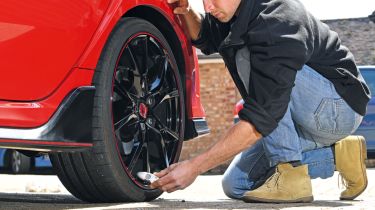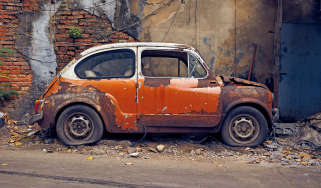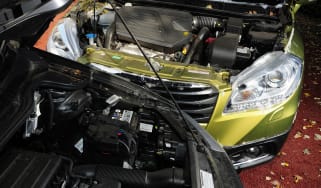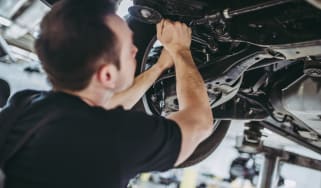Tyre pressures explained: find the right pressure for your car tyres
Find the right pressure for your car tyres and understand why tyre pressure is so important…

Tyres are the vital link between your car and the road, so keeping your car’s tyres properly pumped up is essential to safety. It’s also important to maintaining the car’s braking, handling, and fuel efficiency. Here’s our guide to all you need to know about tyre pressure.
What is tyre pressure?
tyre pressure is the amount of air inside the tyre. The more you put in, the greater the pressure as the air is compressed within the tyre. It’s this compressed air that keeps the tyre in shape and lets it perform as it was designed to.
Different types of tyres work at different pressures, so you need to check your car’s owner’s manual or the tyre pressure label, usually on the frame inside the driver or passenger’s door, for the correct pressures.
How do you know what’s the right tyre pressure?
There are loads of ways to find out the right tyre pressure for your car. The owner’s manual will give you the correct information, or you can usually find it on a label inside the driver’s door shut.
This will often give a variety of pressures for different scenarios. There might be a set of pressures for when the car is being driven with just one or two people and a set for when it’s fully loaded such as when you go on holiday, or when towing. For optimum performance you should adjust the tyre pressures for each occasion.
If you still cannot find the correct tyre pressure for your car, your car dealer or garage mechanic should be able to help. You can also look online – many tyre fitting centres have online calculators to tell you the right pressure for your make and model, and even the specific wheel size.
How do you check tyre pressure?
Most cars made since 2014 have a tyre pressure monitoring system (TPMS) fitted that makes it simple to spot an underinflated tyre. If your car doesn’t have TPMS, you can retrofit it with aftermarket kits, but it's easy to check your pressures using a manual or digital tyre pressure gauge.
You can use the air line equipment provided on garage forecourts, although there’s often a small charge, and the system may not be the most accurate.
Tyre pressure is measured using two units: bar (where 1 bar is the pressure of the Earth’s atmosphere at sea level) and pounds per square inch (shortened to psi). Most gauges will display both units, and so will your car’s handbook, which lists the recommended pressures. You can find your tyre pressure in your car’s handbook, on the sill inside the driver or passenger side door, or inside the fuel filler flap.
To check your pressures, you need to find each wheel’s tyre air valve, which is a small tube that sticks out of the wheel rim. Each one should have a little plastic screw-on cap dust cover, which you can easily unscrew by hand. Make sure you place it somewhere safe and don’t forget to screw it back on tightly when you’re finished.
Once the dust cap is off, you can place your pressure gauge over the valve, push it in slightly and hold it for a few seconds. A pressure reading should appear on the gauge’s dial or screen.
If any of your tyres aren’t at the correct pressure, the machines on garage forecourts can be programmed to pump them up – you simply input the correct pressure and the machine does the rest. If you’re at home, you can use a powered or foot-operated air pump to add air to the tyre, then check the pressure again to verify you’ve put enough in.
How does tyre pressure affect your car?
Cars with under- or over-inflated tyres will not stop, steer, or drive as well as they should. In extreme cases, they slide across the road and weave under braking, just like they would if the tyre were punctured.
A tell-tale that your car’s tyres are incorrectly inflated is uneven wear. An over-inflated tyre will wear the centre of the tread more rapidly, while an under-inflated tyre wears out the edges of the tread.
Tyres at the wrong pressure will also affect fuel economy, so keeping them at the right pressure is good for your wallet.
Frequently Asked Questions
No. It’s best to keep the tyres inflated to what the car’s manufacturer recommends. If you fit winter tyres, the pressures might be different to the summer tyres’ so check the owner’s handbook or ask your dealer or local tyre fitting centre for advice.
Check out our in-depth test on the best all season tyres or best winter tyres...
Find a car with the experts








